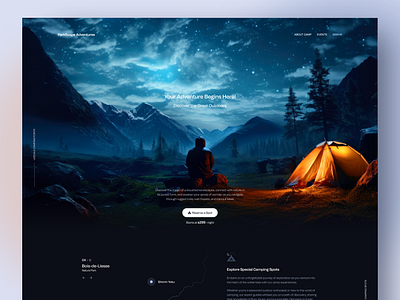Web Design Las Vegas for Affordable Website Development Solutions
Web Design Las Vegas for Affordable Website Development Solutions
Blog Article
Imaginative Web Layout Solutions for Modern and Engaging Sites
In the realm of internet style, the search of contemporary and interesting services has come to be progressively vital for businesses intending to capture user attention. By integrating strong color schemes, interactive aspects, and receptive designs, developers can create experiences that not just resonate with individuals yet also enhance brand name identity.
Accepting Vibrant Shade Systems
In website design, the critical use strong color design can dramatically enhance individual involvement and brand name identification. By employing vivid tones, developers can create aesthetically striking websites that capture attention and cultivate a remarkable experience. An appropriate color palette not just shows a company's values however likewise evokes particular feelings that can influence customer habits.
Vibrant shades can be employed to lead customers' attention to crucial elements such as contact us to activity, enhancing conversion prices. For example, making use of contrasting shades for switches and links can make these components attract attention, triggering users to connect quicker. A cohesive shade scheme throughout the internet site strengthens brand name acknowledgment, producing a feeling of knowledge and trust fund amongst visitors.
Nonetheless, it is vital to balance bold colors with ample white area to avoid overwhelming users. Reliable use typography additionally enhances strong shades, guaranteeing readability while preserving visual charm. Inevitably, accepting bold color pattern in website design not just boosts visual quality yet likewise plays an essential function in accomplishing calculated business purposes, making it a crucial consideration for modern-day internet development.

Making Use Of Interactive Components
Interactive aspects are vital in modern internet layout, as they dramatically improve customer interaction and develop a much more dynamic surfing experience. By incorporating features such as computer animations, float impacts, and clickable aspects, web sites can motivate individuals to discover material better and return for future brows through.

Micro-interactions, such as subtle computer animations when a switch is clicked or a form is submitted, can additionally boost the individual experience by offering prompt comments. These small details can make the website feel even more responsive and active, promoting a feeling of connection in between individuals and the website.
In addition, gamification components, such as rewards for finishing details activities, can motivate individuals to involve with the content much more deeply. By attentively incorporating these interactive parts, web designers can create a memorable and engaging on-line experience that reverberates with customers and urges them to return.
Implementing Receptive Design
Carrying out responsive layout is crucial in today's multi-device landscape, ensuring that internet sites provide an optimum viewing experience throughout different display sizes. As customers significantly access the internet through smartphones, tablets, and desktop computers, a one-size-fits-all strategy is no much longer sensible. Receptive layout enables seamless navigating and interaction, adapting format and material to fit the tool being used.
Trick principles of receptive layout include liquid grids, flexible pictures, and media questions. Fluid grids use family member units, such as portions, instead of dealt with pixels, allowing components to resize proportionately. Versatile photos range within their containing elements, avoiding overflow and preserving aesthetic honesty. Media questions facilitate the application of different designs based on the device's characteristics, such as width, height, or resolution, enabling designers to customize the user experience successfully.
In addition, receptive style improves SEO performance, as search engines prefer mobile-friendly websites. By carrying out responsive layout, services not only boost customer fulfillment and interaction but additionally enhance their reach in an affordable electronic landscape. As technology proceeds to progress, adopting receptive style has become a basic method for any kind of contemporary and appealing web site.
Incorporating Multimedia Web Content
Multimedia material plays an essential duty in creating appealing and vibrant web experiences that capture users' focus and boost understanding. By incorporating message, pictures, sound, and video, internet sites can use a richer narrative that attract various learning designs Recommended Reading and preferences. This combination not just strengthens customer involvement but additionally aids in sharing intricate ideas succinctly.
Incorporating high-grade images and infographics can separate textual material, making it extra absorbable. Video clip tutorials and presentations can supply extensive insights that fixed material might not fully connect. Audio components, such as podcasts or background songs, can also boost the atmosphere of a site, developing a much more immersive experience.
Additionally, the critical use multimedia can enhance search engine optimization efficiency, as online search engine favor diverse material types, boosting visibility. However, it is critical to guarantee that multimedia elements do not hinder web page lots times, as this can lead to user irritation. By balancing multimedia integration with efficiency considerations, internet designers can produce aesthetically enticing and functional internet sites that resonate with individuals, fostering a much deeper link and encouraging return gos to.
Prioritizing Individual Experience

To achieve an optimal individual experience, designers should concentrate on numerous key concepts. Clear phone calls to activity, understandable typography, and arranged web content guide individuals, minimizing cognitive lots.
In addition, integrating individual feedback right into the layout procedure is indispensable. Regular screening with real customers assists identify discomfort factors and locations for renovation, enabling iterative improvements. Eventually, prioritizing UX not only boosts user complete satisfaction yet also drives interaction and conversion rates, making it an important component of modern website design techniques. By positioning individuals at the facility of layout efforts, sites can develop enduring, positive impressions that urge return check outs.
Conclusion
To conclude, modern-day website design remedies that highlight bold color design, interactive components, responsive design, and multimedia material significantly boost user engagement and complete satisfaction. company website Focusing on user experience through clear layouts and continuous comments even more contributes to enhanced conversion prices. By embracing these methods, sites can successfully mesmerize visitors and reinforce brand identity, ultimately bring about a much more vibrant and appealing on the internet useful content visibility. The combination of these design concepts is crucial for accomplishing modern website design goals.
Report this page